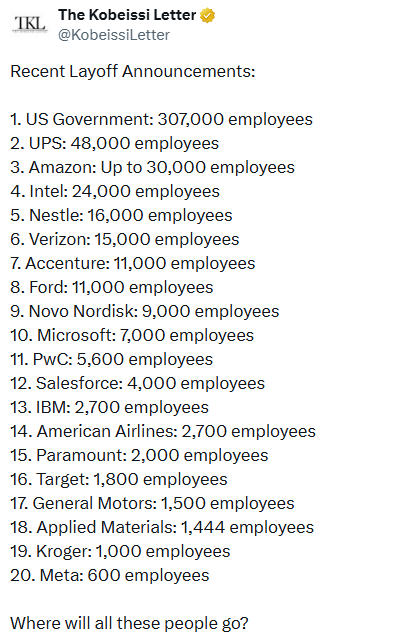Poor economic data and soft inflation saw several central banks, including the Federal Reserve and European Central Bank, take a dovish turn in March. Contrary to expectations that interest rates would rise as the G3 central banks were no longer adding to their balance sheets on a combined basis. The sharp drop in interest rates and the flattening of curves in March is one of the key factors shaping the investment climate. The fall in yields has occurred even as oil prices have climbed, with supply disruptions more than offsetting demand concerns.
As the first quarter drew to a close, there were some preliminary signs that many of the largest economies may be stabilizing from what we suspect will be shown to be a soft patch at during a late part of the expansion cycle. We expect the Federal Reserve will try to cool the rate cut fever and firm data help this effort. The low point for Europe may be passing, but the recovery looks tentative. Spain holds national elections late in the month, and Spanish assets underperformed n March perhaps partly in anticipation.
The US-China trade talks will likely continue through most if not all of Q2, and in the meantime, China tax cuts, other stimulative and market-opening measures are being wheeled out. Required reserve ratios may be reduced in the coming weeks. India, the world’s largest democracy national elections take a month and will begin on April 11. Foreign investors have favored Indian equities, buying $7 bln this year and helping lift the stock market in all but three weeks in the first quarter.
April 12 is an important date for the UK. It is the last day to declare its intentions toward the EU Parliamentary elections. With the Withdrawal Bill having been defeated for the third time in the House of Commons, the UK must seek a longer extension or leave without an agreement. There is little appetite for either alternative, but there appears, at least at the first attempt, no parliamentary majority for any course.
US Dollar
According to surveys, most economists had expected a recession in the next two years, which is within the lag time that has historically been signaled by the inversion of the US yield curve. The inversion strengthened the pre-existing conviction. It does look as if the US economy slowed sharply in Q1, especially in the first part that was hampered by the government shutdown. However, the data has turned more mixed, which is what one might expect as the economy recovers from the soft patch. We are projecting around 2% growth in Q2. There is no FOMC meeting in April; the next one is May 1. In the meantime, we expect officials to lean against market expectations of a rate a cut and more this year. As the following report shows, the median forecast in the Bloomberg survey is consistently more dollar negative than the one-month forward. The yen is the sole exception, and the deviation is minor. We have a more constructive outlook.
Euro
The European Central Bank did not wait for staff forecast updates before expressing its concern about the region’s growth prospects. The notice it gave investors in February was made good on in March. This year’s forecast was slashed to 1.1% from 1.7% projected in December, and seemingly aggressively, it recognized the risks remained on the downside. Then the simply dreadful flash showed their prescience. The manufacturing PMI fell deeper into contraction (47.6 vs. 49.3), and the composite slipped to 51.3 from 51.9, a new cyclical low. There are unlikely to be fresh measures announced at the April 10 ECB meeting. Terms of the new Targeted Long-Term Refinance Operation may not be announced until later in the quarter. The immediate focus may shift toward minimizing some of the hardship caused by negative interest, which will continue to several more quarters at least. We expect the eurozone economy to find better traction as the quarter progresses.
| Spot | $1.1218 |
| Median Forecast Bloomberg Survey | $1.1315 |
| Implied Volatility | 5.4% |
| One-Month Forward Indication | $1.1246 |
Japanese Yen
Japan’s economy contracted in H2 18 and does not appear to have found much traction. However, there seems to be little appetite to provide more stimulus either the government or the Bank of Japan. The government has adopted a series of incentives that were designed to offset the economic impact of the sales tax increase (from 8% to 10%) in October, so the bar to postpone the tax again seems high. The yen appears to be more sensitive to global bond and equity moves. The central bank faces a significant operations challenge that may weigh on the yen late in the month. The holiday around the abdication of Emperor Akihito will shut the government and businesses (including banks) from April 27 through May 7. This is an unprecedented long holiday. It will skew economic data for some time. The BOJ will likely inject massive amounts of liquidity into the system, and several market segments, like banks, funds, and life insurers are candidates to raise hedge ratios, with the scar tissue still raw from the January flash when the dollar fell a few percentage points quickly.
| Spot | JPY110.86 |
| Median Forecast Bloomberg Survey | JPY110.57 |
| Implied Volatility | 5.9% |
| One-Month Forward Indication | JPY110.55 |
British Pound
For the past 18 months, the UK had been expected to be out of the European Union by now. One of the remarkable developments over these months is how united Europe seems and how divided the UK appears. Arguably the UK invoked Article 50 prematurely without working through some critical but difficult issues, like its obligations under the Good Friday Agreement. There may have been a majority to leave, but it was never clear when and how. The key date now is April 12. Having rejected the Withdrawal Bill three different times, like some kind of medieval test, the UK has little choice but to negotiate a longer extension, and participate in the EU elections or leave without an agreement. April 12 was not an arbitrary date. It is the last day for the UK to enter the EU Parliament elections at the end of May. The longer and softer the Brexit, the better sterling may respond.
| Spot | $1.3035 |
| Median Forecast Bloomberg Survey | $1.3157 |
| Implied Volatility | 12.9% |
| One-Month Forward Indication | $1.3055 |
Canadian Dollar
After selling off in every week but one in Q4 2018, the Canadian dollar appreciated in every week but one January and February. However, in March it struggled. Economic data from earlier in the year disappointed. The Bank of Canada tempered its tightening bias, and the stronger than expected January monthly GDP (0.3% after -0.1% in December) may offset some recently soft data. The stabilization of equities, the sharp narrowing of the Canadian premium over the US (as US rates fell faster), and the firm oil prices (near five-month highs at the end of Q1) may help the Canadian dollar trade higher ahead of the Bank of Canada’s meeting on April 24. Officials are unlikely to draw much comfort from the monthly GDP. Separately, Canada’s trade balance has markedly deteriorated. The deficit in December-January was the largest two-month shortfall on record. The value of Canada’s oil exports slowed late last year, while non-oil exports have been stagnant since the middle of 2018. The value of exports rose in January (2.9%) for the first time since July. The value of non-energy exports rose 1.2% in January, the first increase in three months.
| Spot | CAD1.3349 |
| Median Forecast Bloomberg Survey | CAD1.3299 |
| Implied Volatility | 5.6% |
| One-Month Forward Indication | CAD1.3339 |
Australia
The Australian dollar was little changed in March, which means that it held up better than most major currencies last month. While the cash rate remains at 1.75%, we expect the rhetoric to begin leaning to the dovish side. The Reserve Bank of New Zealand did so at the end of Q1. The economy is soft and global headwinds remain. The 10-year benchmark yield fell almost 40 bp last month. It is below the cash rate and bank bill rates. Strengthening of China’s economy may help, but part of that entails bringing back on shuttered capacity, such as coal. More than 100 mining operations are seeking to restart activity for example. Policymakers may be particularly sensitive to labor market developments and inflation expectations, while the widening of Australia’s interest rate discount and curtailed risk appetites leave the Aussie vulnerable.
| Spot | $0.7096 |
| Median Forecast Bloomberg Survey | $0.7131 |
| Implied Volatility | 7.1% |
| One-Month Forward Indication | $0.7101 |
Mexican Peso
AMLO’s agenda is working its way through Congress and that it may take most of the second quarter to complete it. Although price pressures appear to be easing, the central bank is still reluctant to signal it will ease policy, which is how it undergirds its strong market credentials. The high interest rates in the current may draw carry-trade strategy interest. Speculators in the futures markets have a record gross long peso futures position of almost 200k contracts (MXN500k per contract), as of March 26. It grew four-fold over the quarter. Such extreme positioning is often thought of as a contrarian indicator. The dollar rose 1.75% against the peso in the last week of March.
| Spot | MXN19.4280 |
| Median Forecast Bloomberg Survey | MXN19.4440 |
| Implied Volatility | 10.75% |
| One-Month Forward Indication | MXN19.5220 |
Chinese Yuan
After the rising to its best level since July, the Chinese yuan pulled back and finished the quarter on March’s lows. The dollar spent a little time below CNY6.70, which seems like the lower end of the officially-approved range for the dollar, though some see it extending toward CNY6.60. China’s tax cuts are to be implemented in April, and we expect economic activity to pick-up. There is scope for a reduction in required reserve ratios. It may be delivered in April or May. Meanwhile, China is announcing other measures to open the domestic economy to foreign companies. Chinese bonds will be included in the Bloomberg-Barclay’s benchmarks, and Chinese shares are getting a heavier weighting in the MSCI indices. The rise of passive investing in the US (as well as Europe and Japan) translates these benchmark changes into demand for securities and currency.
| Spot | CNY6.7120 |
| Median Forecast Bloomberg Survey | CNY6.7164 |
| Implied Volatility | 3.94% |
| One-Month Forward Indication | CNY6.7220 |
Tags: #GBP,#USD,$AUD,$CAD,$CNY,$EUR,$JPY,MXN,newsletter






























